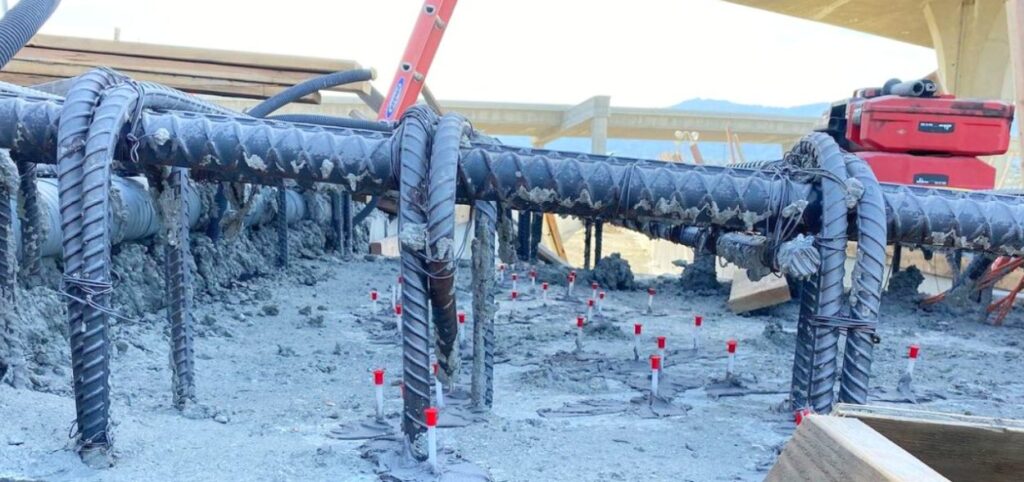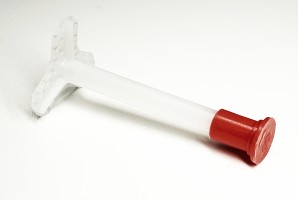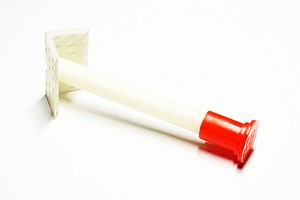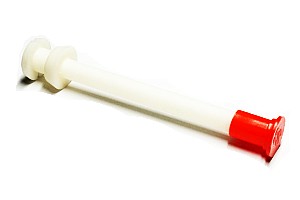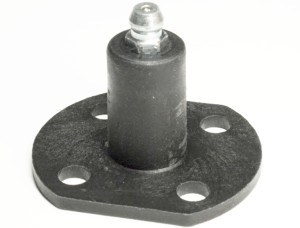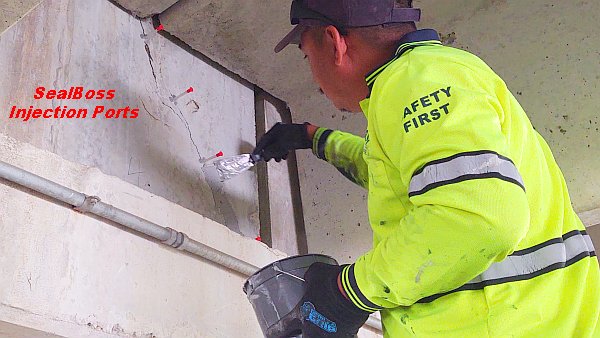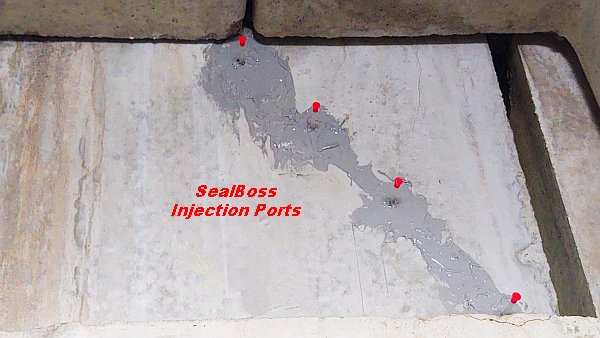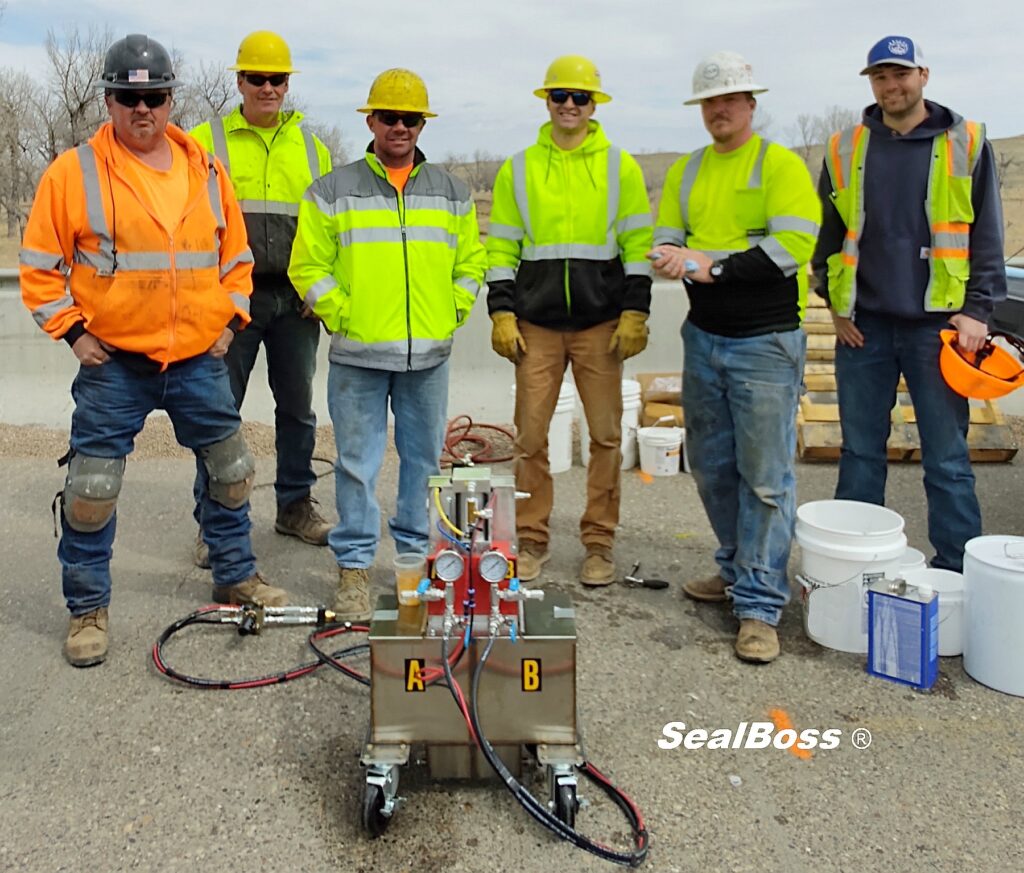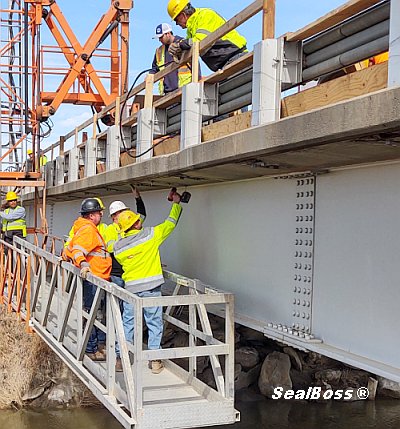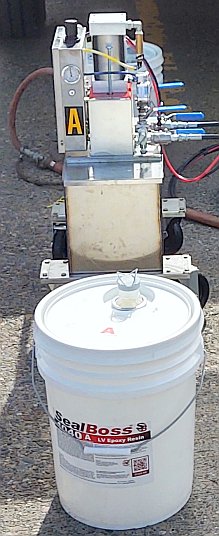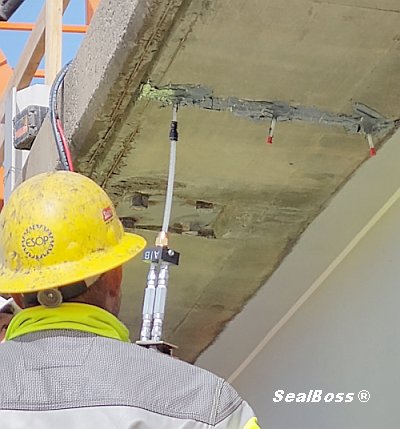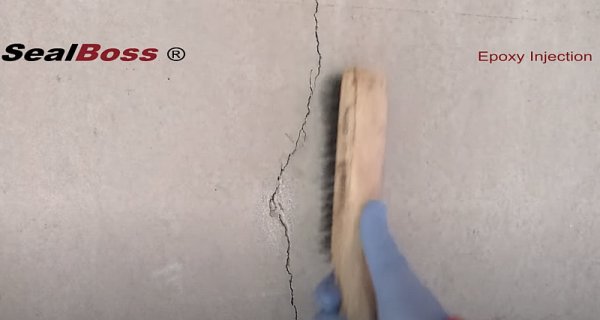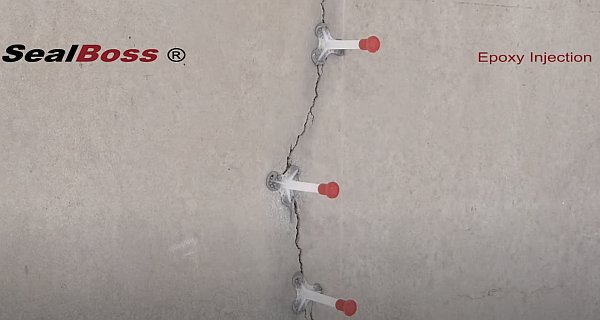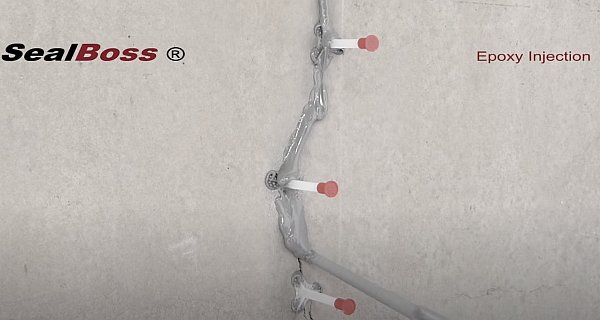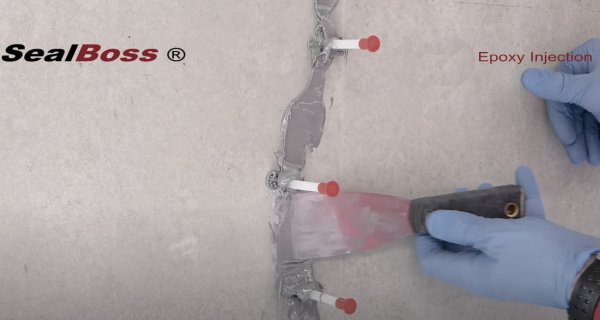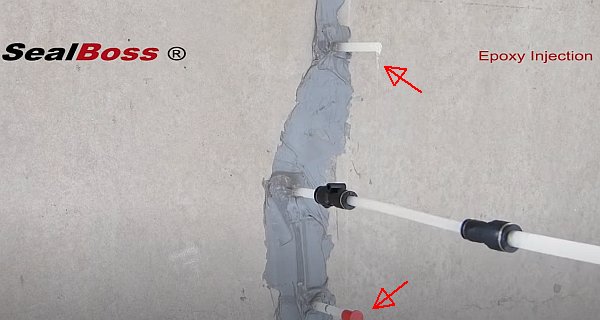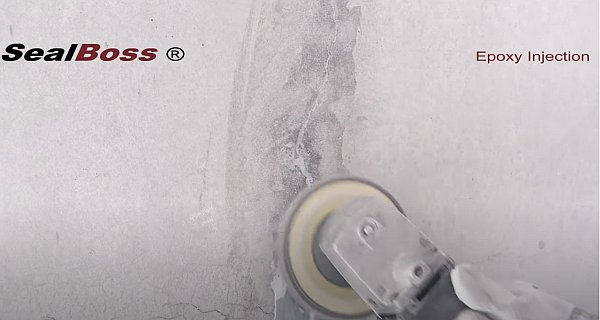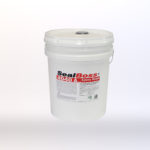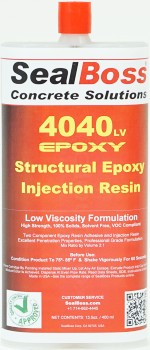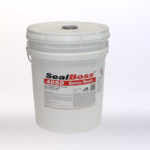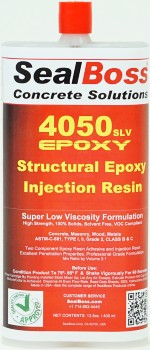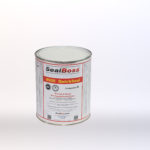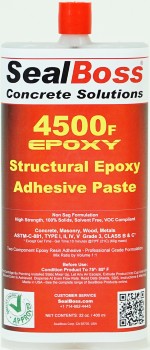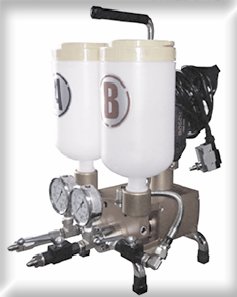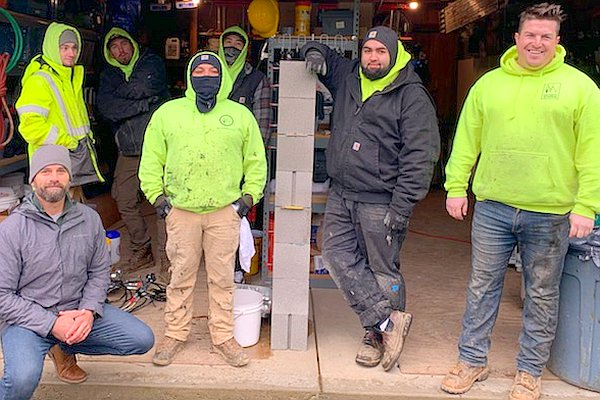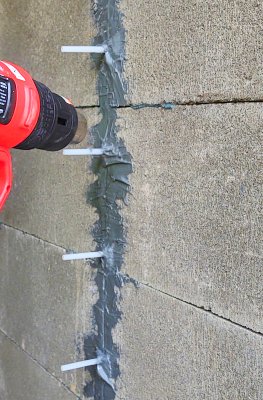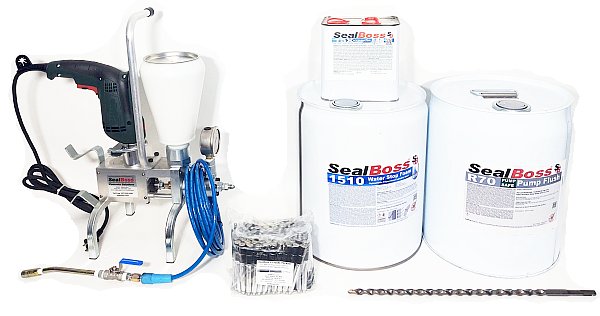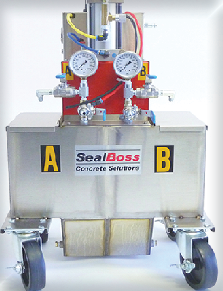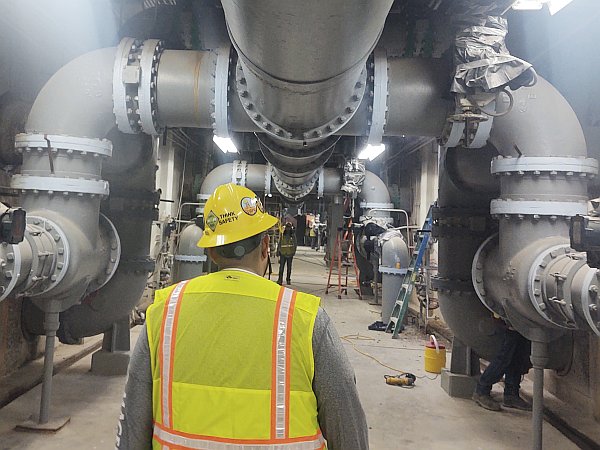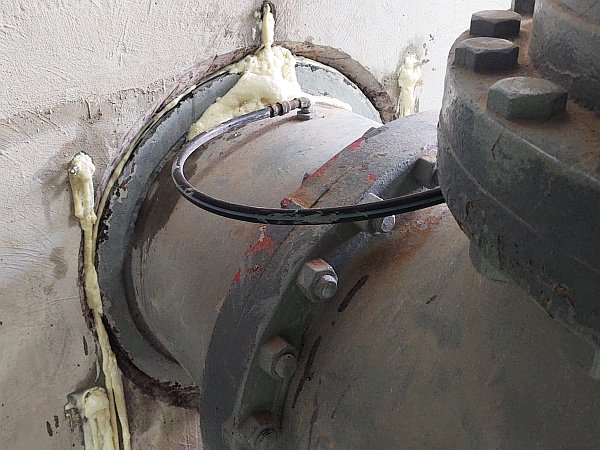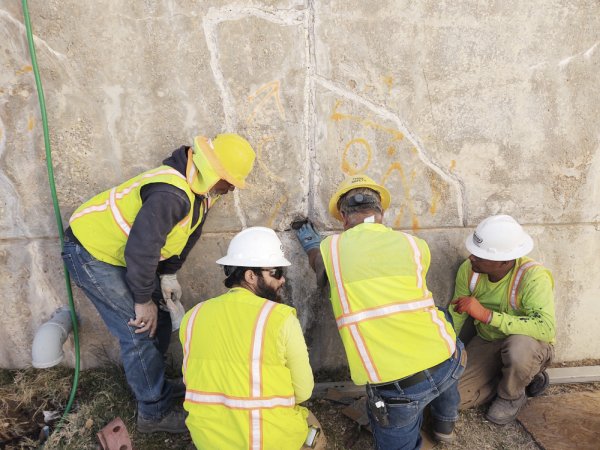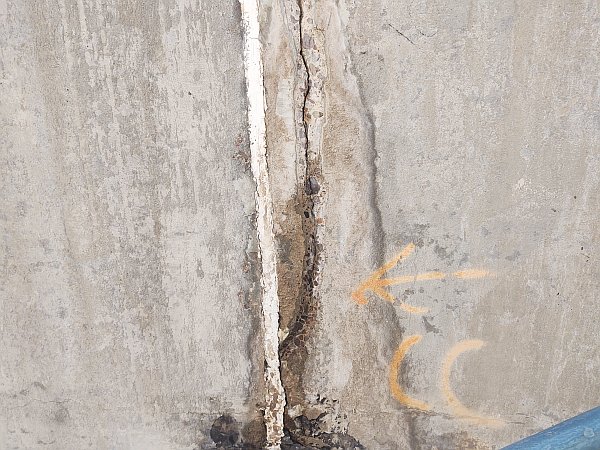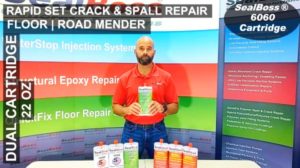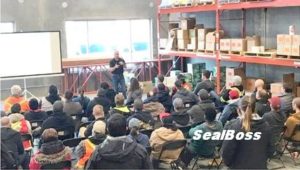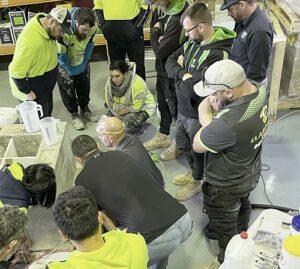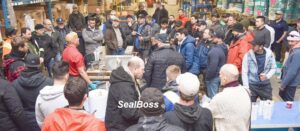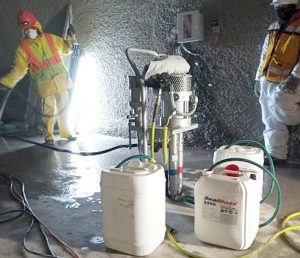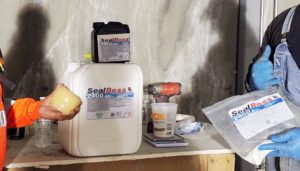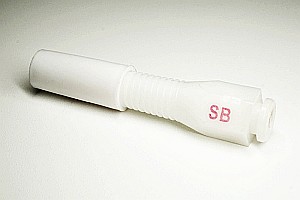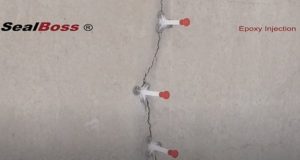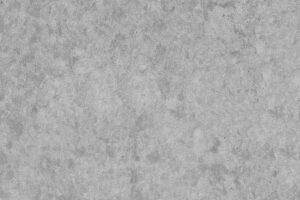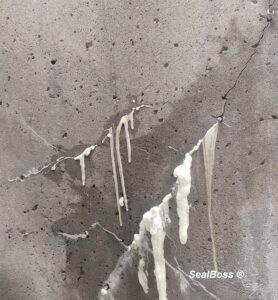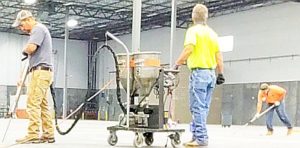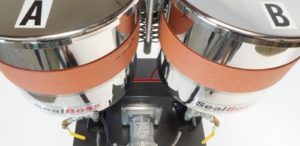Highly specialized contracting companies with a unique skill set are charged with constructing and installing transmission towers for power lines across California’s inland regions where renewable energy sources are developed at a rapid pace. With wind turbines and solar farms increasingly dotting the hilltops in California, the enhancement of renewable energy necessitates a robust infrastructure consisting of sturdy electricity transmission towers and well-distributed power lines.
Yet, the challenging weather conditions, which can include sandstorms, frosty snowstorms, and extreme temperature fluctuations, pose a significant threat to the structural integrity of the concrete supports that uphold this infrastructure.
Restoring Structural Integrity – Foundation Crack Epoxy Injection for Infrastructure Repairs
To counter these challenges, specially trained repair crews are commissioned to restore the structural integrity of concrete foundations and footings for the electricity transmission pylons that support overhead power lines spanning across California’s Central Valley.
The design of the pylon footings can take cylindrical or rectangular shapes, and cracking can manifest horizontally or vertically. Regardless of the orientation or size of these cracks, SealBoss Epoxy systems are proficiently designed to repair, mend and restore the concrete to its predetermined integrity.
Presenting the SealBoss Structural Infrastructure Repair Systems
Among several options, the compact Sealboss P3003 Electric Epoxy Pump Pro-Kit is a popular choice. This system encompasses high-strength, low-viscosity 4040 epoxy resin, quick-setting odourless SealBoss 4500 paste adhesive, surface mount ports with perforated tri-base legs, and the impressively portable, lightweight P3003 epoxy injection machine.
The P3003 epoxy injection system comes standard with a 2:1 ratio by volume setup, with the option for a 1:1 ratio conversion. The system also incorporates the capability to pump SealBoss Polyurethane Water Stop Foams and Leak-Seal Resins. Additional Epoxy pumps, including the large job professional PA 3000 pneumatic epoxy injection machine, are also available for selection.
Epoxy Injection Procedure Outline
- Identify and Assess Cracks:
Inspect the concrete foundation for visible cracks and micro fissures. Assess the size, orientation (horizontal or vertical), and depth of each crack.
- Prepare the Epoxy Materials:
Condition the SealBoss 4040 Epoxy Resin and the odorless SealBoss 4500 Epoxy Paste adhesive to the appropriate temperatures, especially in cold conditions to ensure a faster set time.
- Apply Paste Adhesive:
Apply the SealBoss 4500 Epoxy Paste over the cracks to serve as a surface seal. This paste also acts as an adhesive for the SealBoss Tri-Base surface mount plastic ports.
- Install Injection Ports:
Position and install the SB Surface Mount Plastic Ports along the length of the cracks, ensuring secure fastening. These ports should come equipped with caps to prevent epoxy resin back-flow.
- Inject the Epoxy Resin:
Once the adhesive paste is set, begin the injection process. Using the SealBoss P3003 Epoxy Injection Pump, inject the low-viscosity SealBoss 4040 Epoxy Resin into the cracks at the lowest speeds, just enough to move the epoxy resin into the crack and allow for continuous flow and deep penetration of the material.
- Use SealBoss 4050 SLV for Micro-cracks:
For extreme micro-cracks, consider using SealBoss 4050 SLV super low viscosity epoxy to ensure deep penetration into these smaller cracks.
- Monitor the Injection:
Watch for the epoxy material to appear in the next port, indicating sufficient filling of the current crack and time to cap the port and move onto the next.
- Curing:
Allow enough time for the epoxy resin to cure fully within the cracks, restoring and reinforcing the structural integrity of the concrete foundation.
- Finish the Surface:
After the material has fully cured, grind off the ports and smooth down the surface to achieve the desired look and finish.
These procedures should be done carefully and patiently, keeping in mind that the main goal is to ensure a completely sealed and controlled environment for the epoxy to set up properly.
Foundation Crack Epoxy Injection | Transmission Towers – Procedures
To manage the structural integrity, hairline cracks and micro fissures in the concrete foundations are injected with low viscosity SealBoss 4040 epoxy resin. The odourless SealBoss 4500 epoxy paste serves as a surface seal and adhesive for SealBoss Tri-Base surface mount plastic ports equipped with caps to prevent epoxy resin back-flow. For operations in cold conditions, it is advised to precondition the epoxy products to warmer temperatures to facilitate a quicker setting time. When the environment is cold and time permits, mounting the surface port and applying the crack paste a day prior to injection can ensure an appropriate seal around the cracks and good port adhesion to the concrete substrate.
Once the ports are securely fastened and the paste adhesive has set, injection can commence. By using the lowest speeds on the P3003 epoxy pump, sufficient to push epoxy resin into the crack, it allows for continuous flow and deep penetration of the material through the crack.
In situations where SealBoss 4040 epoxy resin, a low viscosity 2:1 material is used for most crack dimensions, SealBoss 4050 SLV super low viscosity can penetrate even deeper, reaching into the farthest corners of extreme micro-cracks.
Once the material is visible in the subsequent port, it serves as a signal to halt the application, cap the port, and proceed to the next one. The primary principle of epoxy injection is to maintain a completely sealed and controlled environment to allow the epoxy to set up and restore the structural integrity of the concrete.
After the epoxy has fully cured, contractors can remove the ports and smooth down the surface to achieve the desired aesthetic look.
Request the Best – Comprehensive System Solutions and Tailored Training from SealBoss
SealBoss specializes in providing comprehensive system solutions designed to restore and preserve the structural integrity of infrastructures. Our solutions are engineered to protect structures from environmental damage including water intrusion, corrosion, and damage from seasonal frost expansion.
Our complete Pro-Kit systems are user-friendly and designed for quick deployment, capable of getting a crew operational in just a few hours.
SealBoss’s on-site training is also available to ensure your project is executed correctly and achieves success. Our commitment to delivering superior-quality service, coupled with our product innovation and industry expertise, makes us a trusted partner in the infrastructure repair and maintenance sector.
Relevant Epoxy Injection Links
